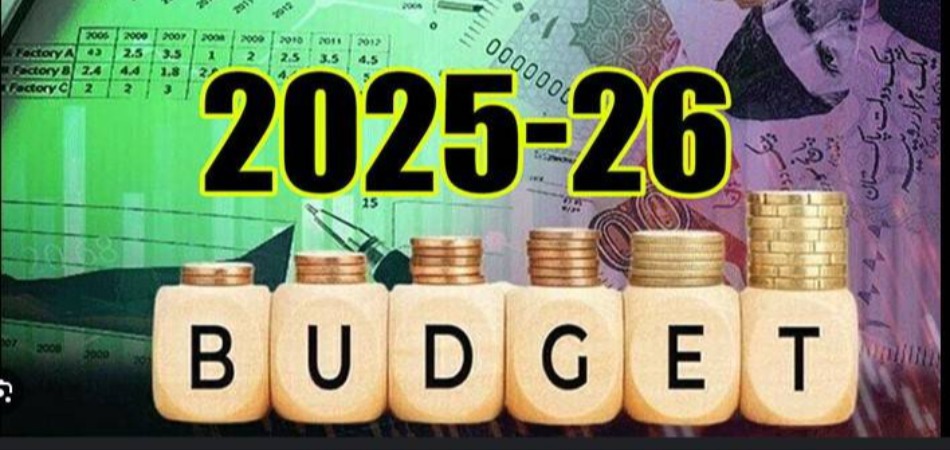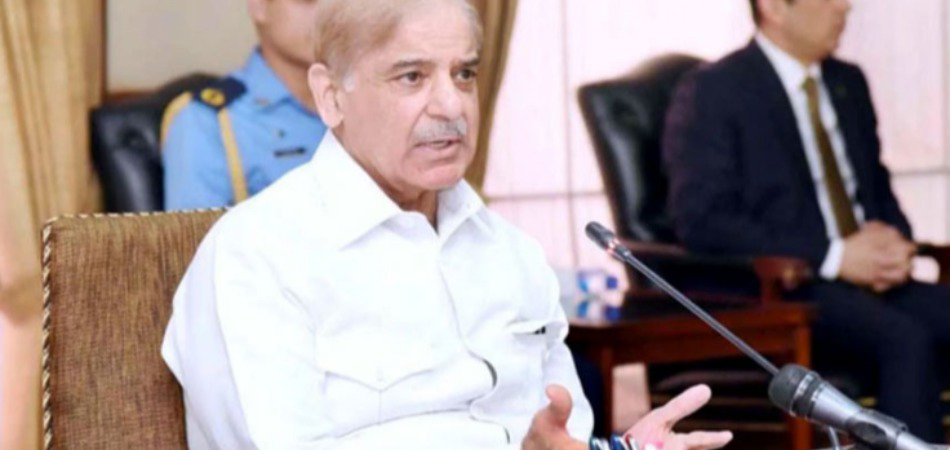Budget FY26: From Podiums to Pantries

Nilam Bano | June 10, 2025 at 03:41 PM GMT+05:00
June 10, 2025 (MLN): Behind the extravagant figures and talk of growth, the mood in power corridors is oddly confident. This will allow our Finance Minister, Senator Muhammad Aurangzeb, to stand tall today, armed with improving numbers, higher growth forecasts, a narrowing current account deficit, and finally cooling inflation.
And he will repeat, “The economy is on the mend.”
But far from those podiums, the streets of Pakistan and a life of a local is telling a quieter story wherein a shopkeeper wipes the dust-off unsold items, a mother standing at the grocery counter, silently removing one item after another to match the cash in her hand and a private sector officer whispers his wife, “Let’s wait one more month for the new refrigerator.”
See, everyone is carrying something- bills, worries, fears, and one question: “What will the budget bring this time?”
This time we spoke to real people (citizens), those who live the numbers and their replies were almost the same, given with a half-smile, half-sigh: “Probably more taxes... there’s never anything for people like us.”
For them, it's not about GDP percentages or targets or PSDP allocations. It’s about whether they’ll have to let go of a worker, fix their choices (cut their budget further for groceries), or break their savings.
The government is all set to unveil its Rs17.8 trillion federal budget today, with a strong emphasis on achieving a primary surplus through expenditure control and the introduction of new revenue measures, aiming to steer the country toward a more sustainable growth path.
The Federal Board of Revenue (FBR) is facing a daunting task to achieve an ambitious Rs14.3tr revenue target, marking a 16% YoY increase over the revised FY25 target of Rs12.3tr.
However, with moderate inflation and subdued GDP growth projected for FY26, the burden will fall on new tax measures to deliver an additional Rs800–Rs1,000bn in revenue.
Thanks to the IMF, the expenditure flexibility will remain severely constrained as the lender discourages funding for non-essential development projects. The government is expected to cap the PSDP at Rs1 trillion, lower than the Rs1.1trn revised FY25 target, with actual disbursement likely to fall short again.
The expected PSDP allocations for federal ministries indicate a significant 20.54% drop from Rs833bn in FY25 to Rs662bn in FY26.
The Climate Change Division is expected to see a sharp cut of 47%, dropping from Rs5.26bn to Rs2.78bn, despite mounting environmental challenges.
The Cabinet Division, on the other hand, is projected to receive a substantial increase of 95.3%, with its allocation rising from Rs25.77bn to Rs50.34bn.
Meanwhile, the Information Technology & Telecommunication Division will likely face a significant 43.5% decline a concerning sign for digital transformation in Pakistan.
Several other important sectors are also facing notable expected cuts in the PSDP 2025-26. The Higher Education Commission is projected to receive 26.4% less funding, reflecting reduced federal engagement in a sector largely devolved to provinces.
The National Health Services Division may see a steep 38% cut, and the Defence Division is expected to face a 42.1% increase in contrast to prior projections of cuts.
Meanwhile, the Maritime Affairs Division could see its funding rise by 29.4%, and the Revenue Division is expected to receive 36.6% less than the previous year.
Perhaps most strikingly, the Pakistan Atomic Energy Commission is projected to face an 81% cut in allocation, signaling a substantial pullback in federal commitment to atomic energy development.
Not to forget, the defense budget is likely to go up to Rs255bn due to the latest geopolitical tensions.
As part of its efforts to broaden the tax net and generate additional revenue from higher-income brackets, the government might impose a 2.5% monthly tax on pensions exceeding Rs400,000 per month or Rs4.8 million annually.
To tighten enforcement, the government might also abolish the non-filer category altogether. This could be accompanied by restrictions on high-value economic transactions such as real estate and vehicle purchases by non-filers — a strategic push to bring more individuals into the tax system.
In a move tied to both revenue generation and public health, the government might introduce a 20% health tax on processed foods and beverages, including items like bakery goods, jams, cereals, and frozen products. This tax is expected to increase gradually in the coming years.
The Petroleum Development Levy (PDL) is also likely to remain a key tool. The government might continue collecting PKR 78 per litre on petrol and diesel, while an additional Rs18 per litre levy has reportedly already been imposed to support electricity-related subsidies. A carbon tax proposal is also under review and may be introduced in this budget cycle.
Another significant move under consideration is the phased withdrawal of GST exemptions for the FATA and PATA regions. Over the next three years, the government might gradually remove these exemptions to restore a level playing field for formal manufacturers competing with tax-free entities.
To address long-standing exemptions in the agricultural sector, the government might introduce a framework to tax agricultural income, potentially included in the provincial budgets.
This could mark a major shift in the taxation landscape, targeting a sector that has largely remained outside the formal tax regime.
To document the informal digital economy, the government might also introduce taxation on content creators, including those earning via YouTube and social media platforms. Lastly, some relief might be on the way for the middle class.
The government is likely to increase the withholding tax exemption threshold for salaried individuals from Rs50,000 to Rs100,000 per month. The federal government will likely impose a 2.5% withholding tax on cigarette distributors.
The auto industry may face significant challenges if the government increases the age limit for used car imports from 3 to 5 years, which could negatively impact local assemblers. While a tariff premium of 40% on used imports will taper off by 2030, concerns remain.
A likely hike in withholding tax on vehicles above 1300cc could affect high-end sales. Meanwhile, the potential removal of 2% Additional Customs Duty (ACD) on auto parts may benefit consumers but is seen as negative for Original Equipment Manufacturers (OEMs).
In addition, the fertilizer industry could also face increased taxation, as the government is considering doubling the Federal Excise Duty (FED) from 5% to 10% on non-urea fertilizers.
Additionally, there is a proposal to impose a standard GST of 18% (up from 5%), though it is unlikely both measures will be implemented simultaneously. A 5% GST on pesticides is also on the table, but is expected to have minimal impact on listed players.
The federal cabinet has recently approved a new tariff policy framework, which is expected to be elaborated upon in the FY26 budget.
However, experts are of the view that any abrupt implementation of these tariff reforms could hurt domestic manufacturers, jeopardize job creation, and disrupt the external account.
A gradual and phased rollout should therefore be considered essential to prevent adverse economic shocks and maintain macroeconomic stability.
Copyright Mettis Link News
Related News
| Name | Price/Vol | %Chg/NChg |
|---|---|---|
| KSE100 | 152,665.72 407.27M | 0.30% 463.85 |
| ALLSHR | 93,512.72 952.68M | 0.19% 179.71 |
| KSE30 | 46,499.67 117.63M | 0.31% 145.67 |
| KMI30 | 220,381.95 195.16M | 0.52% 1131.16 |
| KMIALLSHR | 62,699.31 540.03M | 0.32% 200.90 |
| BKTi | 41,648.07 111.30M | -0.24% -102.23 |
| OGTi | 30,874.07 15.20M | -0.04% -11.04 |
| Symbol | Bid/Ask | High/Low |
|---|
| Name | Last | High/Low | Chg/%Chg |
|---|---|---|---|
| BITCOIN FUTURES | 110,275.00 | 112,840.00 109,720.00 | -2555.00 -2.26% |
| BRENT CRUDE | 66.81 | 67.41 66.35 | -0.79 -1.17% |
| RICHARDS BAY COAL MONTHLY | 87.75 | 87.75 87.75 | -0.75 -0.85% |
| ROTTERDAM COAL MONTHLY | 95.55 | 96.15 95.50 | -0.85 -0.88% |
| USD RBD PALM OLEIN | 1,106.50 | 1,106.50 1,106.50 | 0.00 0.00% |
| CRUDE OIL - WTI | 63.30 | 63.84 62.72 | -0.67 -1.05% |
| SUGAR #11 WORLD | 15.70 | 16.09 15.66 | -0.33 -2.06% |
Chart of the Day
Latest News
Top 5 things to watch in this week
Pakistan Stock Movers
| Name | Last | Chg/%Chg |
|---|
| Name | Last | Chg/%Chg |
|---|


.png)

 Trade Balance
Trade Balance